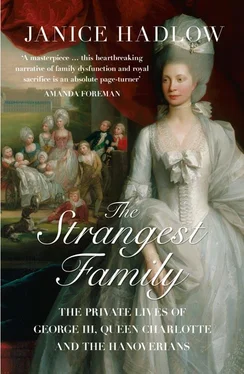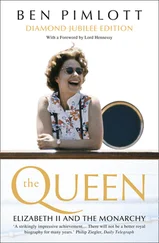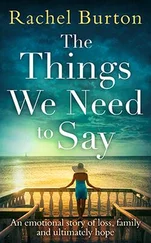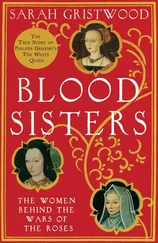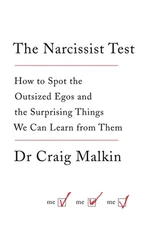London’s reputation as the place where anything was on offer and where everything seemed achievable was then, as it is now, the key to much of its pungent attraction. But it promised far more than entertaining diversions. The growth of the capital was driven by the extraordinary number of roles it performed. It was the focus of the nation’s politics. The king lived there, it was where Parliament assembled, and it was there that the political classes expected to fight their battles and win their arguments. At court at St James’s, in the government offices at Whitehall, the debating chambers at Westminster, they planned their strategies and marshalled their supporters; in the conversations of the coffee houses and taverns, in the great mansions of aristocratic grandees and sometimes on the volatile, riotous streets, the successes and failures of their policies were forcibly and mercilessly assessed. London was also a magnet for anyone interested in the making and management of that other great lever of power: money. The capital was home to Europe’s most sophisticated banking system, and to the busiest, most innovative and ambitious financial markets in the world. The wealthy moneymen of the City of London – known derisively as ‘Cits’, whose nouveau-riche antics were ruthlessly caricatured by contemporary satirists – had long overtaken the Dutch as the brokers, bankers and insurers of international choice. But London’s commerce went far beyond the buying and selling of money. It was a thriving market place for the selling of goods as well as services. It was a great port, a major destination for shipping, whose crowded forests of masts packed into the Thames docks astonished foreign visitors and were a striking visual reminder of the other great preoccupation of eighteenth-century Britons: trade.
The whole of Europe benefited from an upturn in international trade in the middle years of the eighteenth century, but no nation did so with such spectacular results as Britain. British merchants dealt in a vast and ever-expanding range of goods. New essentials – such as tea, coffee and sugar – came into the country, whilst a host of exports – from textiles to metalwares to Josiah Wedgwood’s competitively priced china – flowed out.
Other British entrepreneurs undertook a darker business. Slavery was ‘one of the staple trades of Englishmen’, and the great ports of Bristol and Liverpool were largely built on its tainted dividends. 13The huge returns generated by such ventures, whether trading in people or in things, ramped up confidence, creating a perfect storm of enthusiasm for the very idea of commerce itself. ‘There never was,’ observed Samuel Johnson, ‘from earliest ages, a time in which trade so much engaged the attention of mankind, or commercial gain was sought after with such general emulation.’ 14In Britain this was experienced with particular intensity; the nation’s sense of itself as a great trading nation was, in the mid-eighteenth century, firmly and irrevocably embedded in its identity as a free and enterprising people. Part of the appeal was a simple one: trade made a great number of investors a great deal of money, but it played a role in the construction of an idea of Britishness that went far beyond the advantage of individual profit. The fruits of commercial enterprise were widely believed to underwrite all the constitutional advantages which made Britain so specially favoured among nations. The private wealth it generated, which could not be taken away by taxation unless approved by Parliament, acted as a bulwark against the ambitions of despotic power at home. A poor and hungry people was not a free people, and was easily corrupted by the bribes or threats of overmighty rulers. The profits of trade paid for a strong navy, which kept the seas safe for British exports abroad, but, unlike a standing army, could never be used to threaten the integrity of domestic politics. It delivered a prosperity which, as early economists already understood, kept the wheels and ploughs of industry turning. There was no aspect of the distinctive British way of life which it did not touch. It was little wonder that at every convivial supper or political gathering of the period, once a toast had been drunk to the king, it was the invocation ‘To trade’s increase!’ that was greeted with the most heartfelt and passionate sense of shared feeling.
The wealth produced from the profits of trade was to be seen in all the great commercial centres of Britain – Liverpool, Bristol and Glasgow – which expanded rapidly in the 1760s and beyond. The influence of new money was also evident in the development of pleasure resorts such as Bath and Cheltenham, towns which existed largely as a way to spend profits made elsewhere. Then as now, it was through property – the building, designing and furnishing of houses – that individual prosperity found its most visible expression. These were the years in which the urban centres of Britain were rebuilt and re-imagined as the rich, the genteel and the polite moved surely and steadily out of the old city quarters, leaving behind their uncomfortable proximity with dirty trades and the insolent poor, constructing for themselves new houses built in terraces and squares, on clean, classical lines, punctuated by parks and gardens. Across the monied hotspots of Britain, the process was endlessly and elegantly replicated, from Edinburgh to Dublin to Newcastle, creating a vision of town life whose ordered, light and spacious appeal endures to this day.
The changes to the landscape of mid-eighteenth-century life were not confined to the cities. There was as yet little obvious sign of the revolution in industrial production that would transform Britain out of all recognition during George III’s long reign. In the valleys of Coalbrookdale and the iron foundries of Wales, in the workshops of the Midlands and the mills of Lancashire, new technologies were being developed – engines, looms and furnaces – which would recast the relationship between humanity and the natural world, ushering in production on a hitherto unimaginable scale; but it would be at least another twenty years before these became the dominant and visible signature of British economic expansion.
But for most contemporaries, it was the farm, not the factory, which, after trade, was seen as the most forceful engine of change. For over a generation, it had been improvements in agriculture which had underpinned prosperity. The green, rural countryside that forms such an elegiac backdrop to so much Georgian art was in fact one of the most intensively managed landscapes in Europe. The application of scientific methods to farming – especially new fertilisation techniques which overcame the need to let fields lie fallow for years at a time – transformed crop yields and increased profits, providing a tempting incentive to consolidate smaller holdings into larger and more efficient businesses. For some, the result of these changes was impoverishment: families who had once owned small plots of land were forced off them and into the day labour market, subject to the fluctuating needs of the season and the whims of the farmer’s overseer. For others, the result was cheaper food and much more of it. This left them with more disposable income to spend; for perhaps the first time in history, significant numbers of ordinary people had money to buy goods beyond the basic necessities of life. Their purchases in turn put more money into the hands of those who made the things they bought, and the outcome was a steady but significant increase in both the wealth and buying power of ‘the poor and middling sorts’.
This steady diffusion of prosperity was obvious to anyone visiting Britain. Every observer noted that there was clearly a good deal of new money around. Among the very rich, it was apparent in the construction of great new country houses, and in the seemingly limitless demand for luxurious objects to put in them: clocks and carpets, portraits and brocades, china and silverware, chairs, tables and sideboards. What struck foreign visitors most powerfully, however, was the degree to which the middle classes, and even some of the poor, shared in the general sense of improved wellbeing. In the opinion of one German writer in the 1770s, the ‘luxury’ enjoyed by the middle and lower classes ‘had risen to such a pitch as never before seen in the world’. 15A few years later, a Russian traveller compared the general wellbeing he saw in London with the gulf between rich and poor he had witnessed in France. ‘How different this is from Paris! There vastness and filth, here simplicity and astonishing cleanliness; there wealth and poverty in continual contrast, here a general air of sufficiency; there palaces out of which crawls poverty, here tiny brick cottages with an air of dignity and tranquillity, lord and artisan almost indistinguishable in their immaculate dress.’ 16
Читать дальше
